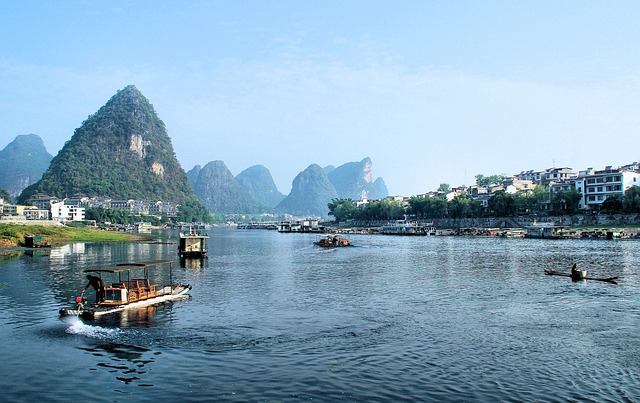3 Key Takeaways:
1. Shift towards Collaboration: China is moving away from past conflicts towards working with neighboring countries on transboundary water management to promote regional stability and sustainable development.
2. Hydropower's Duality: Hydropower offers clean energy and economic benefits but raises concerns about water availability, environmental impacts, and geopolitical tensions downstream.
3. Importance of Diplomacy and Cooperation: Initiatives like the Lancang-Mekong Cooperation and the Belt and Road Initiative emphasize the need for dialogue and joint efforts to address shared water challenges effectively.

China's Transboundary Water Management Dynamics
For decades, China's management of transboundary rivers has stirred tensions, but recent shifts suggest a pivot towards regional cooperation. With 16 major rivers originating within its borders, supplying water to nearly 3 billion people across 14 Asian countries, China's role as 'Asia's water tower' is undeniable. Historically seen as an upstream aggressor, China is now presented with an opportunity to leverage water management for regional peace and collaboration, aligning with the global push for sustainable development.
The Historical Context of Water Politics in Asia:
The relationship between China and its neighboring countries regarding transboundary water resources has been complex and often contentious. China's rapid economic development has led to extensive dam construction on its rivers, causing concerns downstream regarding water availability, environmental impacts, and geopolitical implications. This has given rise to the perception of China as an upstream bully, prioritizing its own interests without regard for its neighbors' needs.
However, recent developments suggest a shift in China's approach towards transboundary water management. Increasing recognition of the interconnectedness of sustainable development and regional stability has prompted China to explore opportunities for collaboration with its neighbors. As global awareness of environmental challenges grows, there is a growing realization that cooperation rather than conflict is essential for addressing shared water challenges effectively.
The Role of Clean Energy and Sustainable Development:
Clean energy industries are re-evaluating their global strategies to align with international political alliances and address environmental concerns. China's ambitious goals in renewable energy production position it as a key player in the global transition towards sustainable development. As countries in the region face pressure to phase out fossil fuels and invest in clean energy, hydropower emerges as a critical component of the energy transition, presenting both challenges and opportunities for regional cooperation.
The lower Mekong region has been a focal point of transboundary water disputes, with protests erupting against Chinese-led dam projects. However, recent years have seen a shift towards collaboration between China and neighboring countries in hydropower development. Despite past tensions, authoritarian regimes in the region have allowed environmental activism against certain projects, highlighting a delicate balance between economic interests and environmental concerns.
Diplomatic tensions between China and India over transboundary water resources underscore the complexities of water politics. Accusations of Chinese interference in India-Pakistan water disputes and disputes over the China-Pakistan Economic Corridor add further layers to the intricate web of regional dynamics. Despite these challenges, there are opportunities for dialogue and cooperation to address shared water challenges effectively.
Internally, China grapples with fragmented water management structures, lacking a unified regulatory framework for transboundary water governance. However, recent years have seen significant improvements, with China actively engaging in multilateral cooperation platforms and establishing initiatives like the Lancang-Mekong Cooperation to address regional water issues.
The Belt and Road Initiative: A Multifaceted Approach to Transboundary Water Management:
The Belt and Road Initiative (BRI) serves as a catalyst for integrated water and environmental resource management, promoting collaboration across Southeast Asia, Central Asia, and beyond. Through capacity-building initiatives and infrastructure projects, China seeks to foster long-term cooperation and sustainable development along transboundary waterways.
While challenges persist, China's evolving approach to transboundary water management signals a shift towards regional cooperation and sustainable development. As global dynamics continue to evolve, navigating diplomatic waters will be crucial in fostering peace, stability, and prosperity across the region. Through dialogue, collaboration, and shared responsibility, China and its neighboring countries can work together to address shared water challenges effectively and build a more sustainable future for generations to come.
Embracing Innovation and Water Sustainability at Watertech China 2024
In light of China's evolving approach to transboundary water management and the growing emphasis on sustainability, it's fitting to explore innovative solutions at events like Watertech China 2024. Taking place in Shanghai from June 3-5, 2024, this expo showcases cutting-edge water technologies, sustainable practices, and wastewater treatment solutions. Join us at Watertech China 2024 to be part of the conversation and contribute to shaping a more water-secure and sustainable future.


